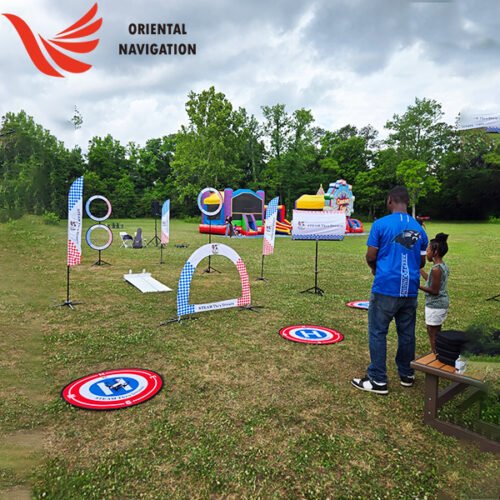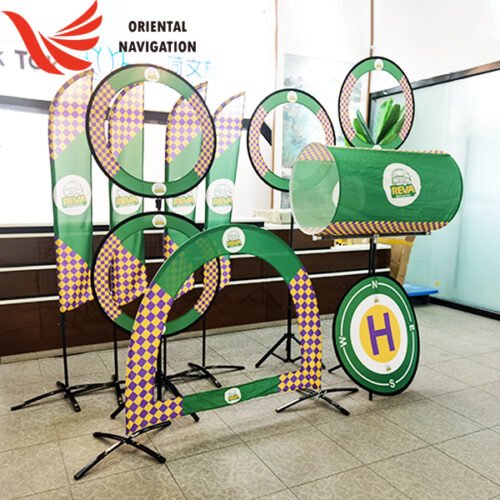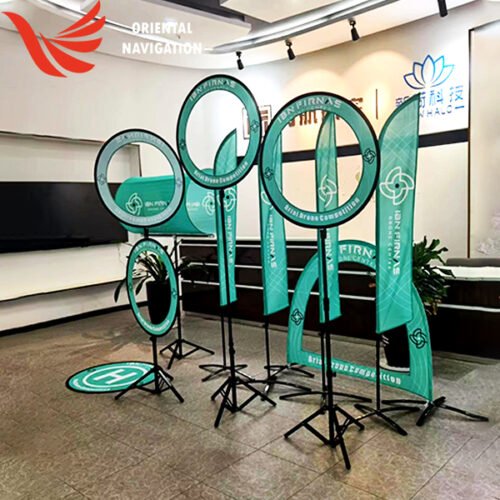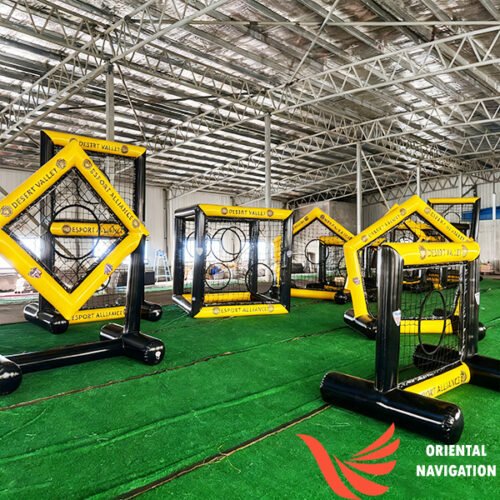Over 70% of tech enthusiasts are now turning their attention towards the innovative world of stem drones, marking a significant shift in hobbyist and educational trends. These cutting-edge devices are not just toys but powerful tools for learning and exploration, blending the thrill of flight with the fundamentals of science, technology, engineering, and mathematics. As the demand for hands-on, interactive learning methods soars, stem drones emerge as a frontrunner, offering an engaging way to grasp complex concepts while having fun. Whether you’re a teacher looking to bring new life into your classroom, a student eager for a practical learning experience, or a hobbyist ready to dive into the mechanics of flight, understanding the potential of stem drones is your next step.

Key Takeaways
- Drones offer a dynamic and engaging way to introduce students to STEM subjects, making complex concepts more accessible and exciting.
- Implementing drone projects in the classroom can significantly enhance learning experiences by providing hands-on, practical applications of theoretical knowledge.
- Teaching coding and engineering through drones not only equips students with valuable technical skills but also fosters problem-solving and critical thinking abilities.
- Innovative methods for drone-based learning, such as gamification and project-based challenges, can boost student motivation and engagement in STEM fields.
- Keeping up with trends in drone technology and educational strategies is crucial for educators to effectively integrate drones into their curriculum.
- Recommendations for drone integration include starting with simple projects to build confidence, ensuring safety protocols are in place, and encouraging collaboration among students.
The Role of Drones in STEM Education
Engaging Tools
Drones have revolutionized the way hands-on learning is approached in STEM education. They serve as dynamic tools that captivate students’ interests. By integrating drones into the curriculum, educators can provide more interactive and engaging lessons.
These flying machines make abstract concepts tangible. Students not only learn about drone function but also apply mathematical and scientific principles in real-world scenarios. This practical application reinforces their learning and understanding.
Real-World Applications
Drones demonstrate how math and science are used outside the classroom. Through drone STEM programs, learners see the direct connection between theoretical knowledge and its practical use. They explore topics like aerodynamics, coding, and data analysis, seeing firsthand how these disciplines intersect in drone operation.
This exposure helps demystify complex subjects. It makes STEM fields more accessible and less intimidating for students, especially those who might be hesitant about their abilities in math or science.

Inspiring Careers
Drones also play a crucial role in sparking interest in technology and engineering careers. By participating in drone legends STEM programs, students gain insights into the vast opportunities within these fields. They learn not just about flying drones but also about designing, programming, and troubleshooting them.
This hands-on experience can inspire students to pursue STEM careers. It provides a glimpse into the future of technology and its potential for innovation. Drones make it clear that a career in STEM is not only about equations and lab reports; it’s about solving real-world problems with creativity and technology.
Enhancing Learning with Drone Projects
Project-Based Learning
Drone projects offer unique opportunities for students to engage in hands-on activities. Mapping and environmental monitoring are perfect examples. Students can use drones to create detailed maps or track changes in the environment. This not only teaches them about drone operation but also about data analysis and geographic information systems.
These projects encourage students to apply what they’ve learned in physics, math, and geography. They must consider factors like wind speed and direction, drone battery life, and the area’s topography. This integration of subjects makes learning more dynamic and relevant.
Teamwork Development
Working with drones often requires collaboration. Students must work together to plan their drone missions, solve problems, and analyze data. This fosters effective teamwork and communication skills, vital in any career path.
In these projects, each team member plays a role, whether it’s piloting the drone, programming its flight path, or interpreting the collected data. Such activities mirror real-world scenarios where diverse skills and teamwork lead to success.
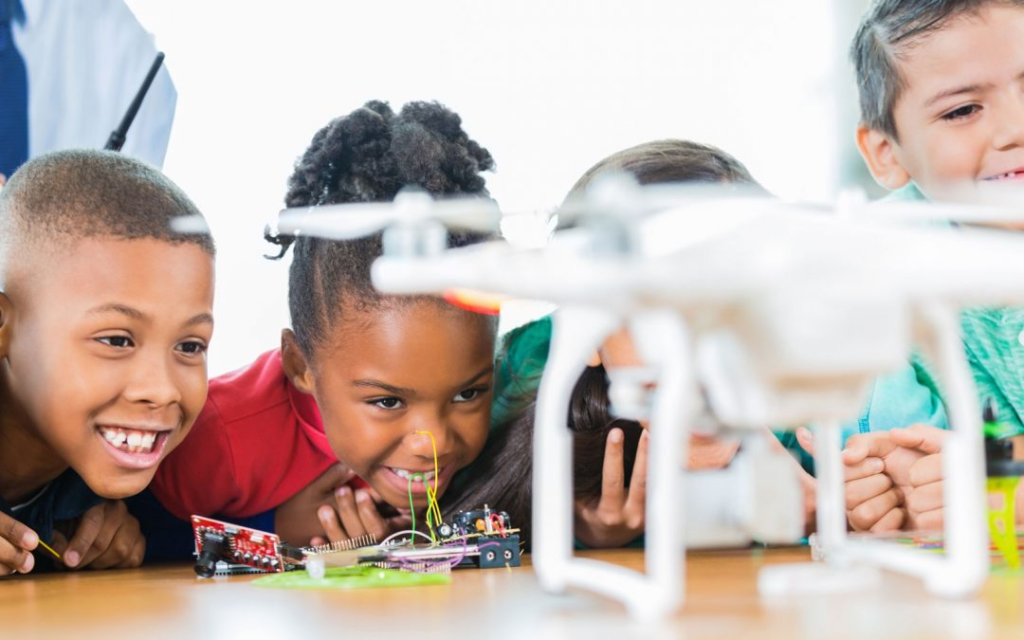
Interdisciplinary Approach
Drones serve as a bridge between different subjects. A project might combine elements of physics (understanding how drones fly), geography (mapping), and computer science (programming the drone).
This interdisciplinary approach helps students see the connections between subjects. It also shows the practical applications of their knowledge. For example, programming a drone to follow a specific flight path involves coding skills, understanding of physics principles, and spatial awareness.
Teaching Coding and Engineering with Drones
Flight Programming
Using drones introduces students to basic and advanced coding through flight programming. They learn to write algorithms that control a drone’s flight patterns, elevations, and speed. This hands-on experience makes abstract coding concepts tangible and engaging.
Students often start with simple commands before progressing to more complex sequences. This progression mirrors real-world coding projects, enhancing their problem-solving skills.
Engineering Principles
Building and customizing drones offer a deep dive into engineering principles. Students understand the mechanics behind drone flight, including aerodynamics, weight distribution, and power management. They experiment with different designs to see how changes affect performance.
This practical application of theory reinforces classroom learning. It encourages innovation and creativity among students, pushing them to think like engineers.
Simulation Software
Before applying their knowledge in real-world scenarios, students use simulation software. This tool allows for safe testing of codes and drone modifications without the risk of damage. It’s an essential step in the learning process, offering a risk-free environment for experimentation.
Simulation also helps in troubleshooting and refining codes and designs. It ensures students are confident in their abilities before handling actual drones.
Innovative Methods for Drone-Based Learning
VR Integration
Drones and virtual reality (VR) together open new doors for immersive learning. Students can pilot drones through VR headsets, experiencing the flight as if they were onboard. This method enhances spatial awareness and understanding of drone operations.
By combining VR with drones, learners grasp complex concepts faster. They see the world from unique perspectives, making education both engaging and informative.
AR Applications
Augmented reality (AR) adds another layer to drone education. It overlays data onto the real world, providing interactive experiences. This technology helps in identifying drone parts and understanding their functions without physical disassembly.
Students engage more deeply when lessons are interactive. AR makes learning about drone technology tangible, bridging the gap between theory and practice.
Gamification Techniques
Gamifying drone education boosts motivation. Challenges, levels, and rewards make learning exciting. Students develop skills in a playful environment, fostering a positive attitude towards technology.
This approach also encourages teamwork and problem-solving. Learners collaborate to overcome obstacles, mirroring real-world scenarios where drones are used.
Remote Learning
Drones enable remote education opportunities. Students participate in online projects, exploring drone applications from anywhere. This flexibility is crucial for inclusive education.
Remote learning with drones breaks down geographical barriers. It connects students worldwide, promoting global collaboration and sharing of ideas.
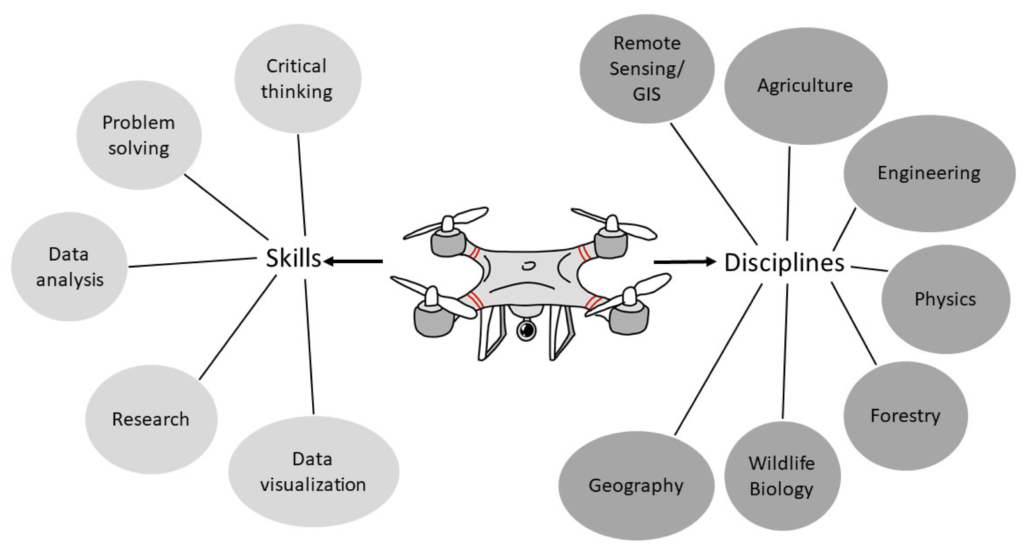
Trends and Recommendations for Drone Integration
AI Integration
The drone industry is rapidly evolving with AI integration leading as a significant trend. This advancement allows drones to process data and make decisions autonomously. Schools looking to integrate drone technology should prioritize models that feature AI capabilities. These drones can offer more engaging learning experiences by simulating real-world scenarios.
AI-powered drones adapt to various educational activities, making them versatile tools in STEM education. Their ability to analyze drone data in real-time can significantly enhance students’ learning outcomes.
Age Appropriateness
Selecting the right drone size and type is crucial for different age groups. For younger students, consider drones from the Force1 drone series, known for their durability and ease of use. These models are ideal for introductory lessons on drone navigation and basic principles of flight.
For older students, focus on more sophisticated drones that offer advanced features like intermittent drone use and complex navigation jumps. These features challenge students and encourage deeper learning in subjects like physics and engineering.
Safe Incorporation
To safely incorporate drones into the classroom, schools must establish clear guidelines on their use. Start with creating designated flying zones away from crowded areas. Also, ensure students wear protective gear during flight sessions to prevent accidents.
Instructors should undergo training to understand drone ingestion and maintenance thoroughly. This knowledge is vital in preventing mishaps and ensuring the longevity of the educational drones.
Summary
Drones in STEM education open a world of possibilities, enhancing learning and teaching in innovative ways. You’ve seen how drones can revolutionize coding, engineering, and even the methodology behind education. The trends point towards an even greater integration of drones into educational systems, offering hands-on experience and real-world applications of theoretical knowledge. It’s clear: integrating drones into STEM curriculums not only prepares students for future technological landscapes but also ignites a passion for learning and discovery.
Now’s the time to act. Embrace drone technology in your educational programs or learning journey. Whether you’re an educator looking to enrich your curriculum or a student eager to explore the intersection of technology and education, drones offer a unique and engaging pathway to mastering STEM subjects. Dive into the world of drone-based learning and watch as the boundaries of traditional education expand before your eyes. Let’s take learning to new heights together.
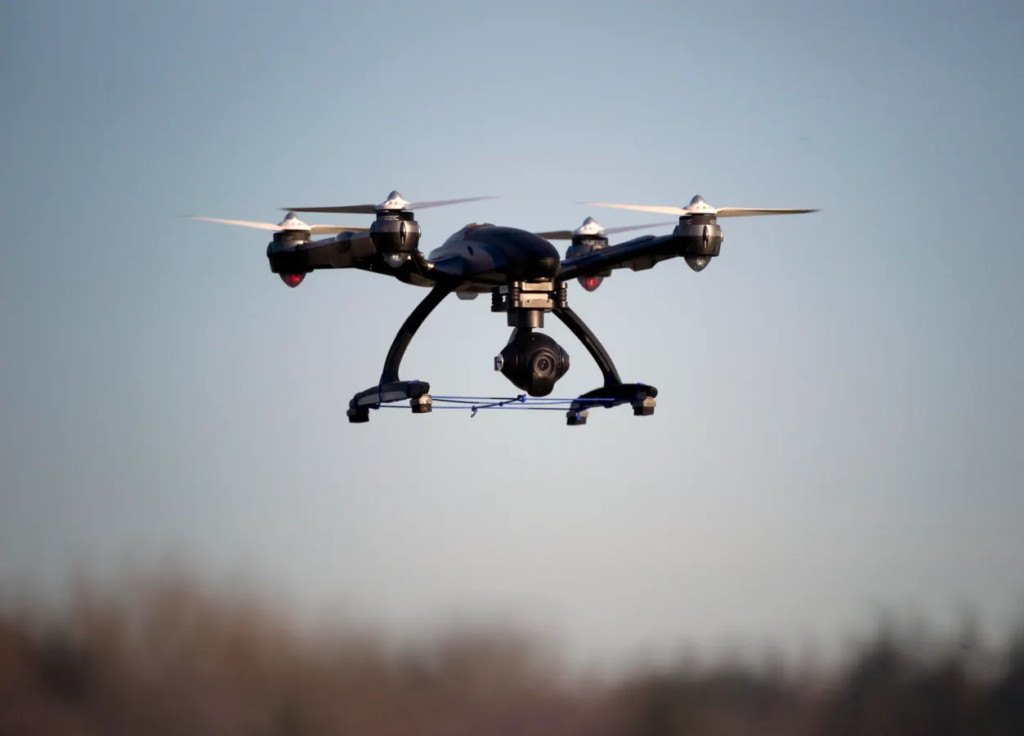
Frequently Asked Questions
How can drones be used in STEM education?
Drones offer a hands-on approach to learning, enabling students to engage directly with technology, engineering principles, and coding through practical application and experimentation.
What benefits do drone projects offer in educational settings?
Drone projects enhance critical thinking, problem-solving skills, and collaboration among students. They provide a real-world context for learning STEM subjects, making education more engaging and effective.
Can drones help in teaching coding to students?
Yes, programming drones introduces students to coding in a practical, engaging way. It helps them understand the fundamentals of algorithms and software development through direct interaction with the drones.
What are some innovative methods for incorporating drones into learning?
Innovative methods include using drones for environmental research, creating aerial photography projects, and conducting physics experiments that explore aerodynamics and flight mechanics.
What are the current trends in drone integration within education?
Current trends focus on increasing accessibility to drone technology for all students, integrating drones with virtual reality (VR) for immersive learning experiences, and emphasizing real-world applications of drone technology in various industries.
Do you have any recommendations for schools looking to integrate drones into their curriculum?
Start with basic models to teach foundational concepts before moving to more advanced drones. Ensure compliance with local regulations and invest in teacher training to maximize the educational potential of drones.


